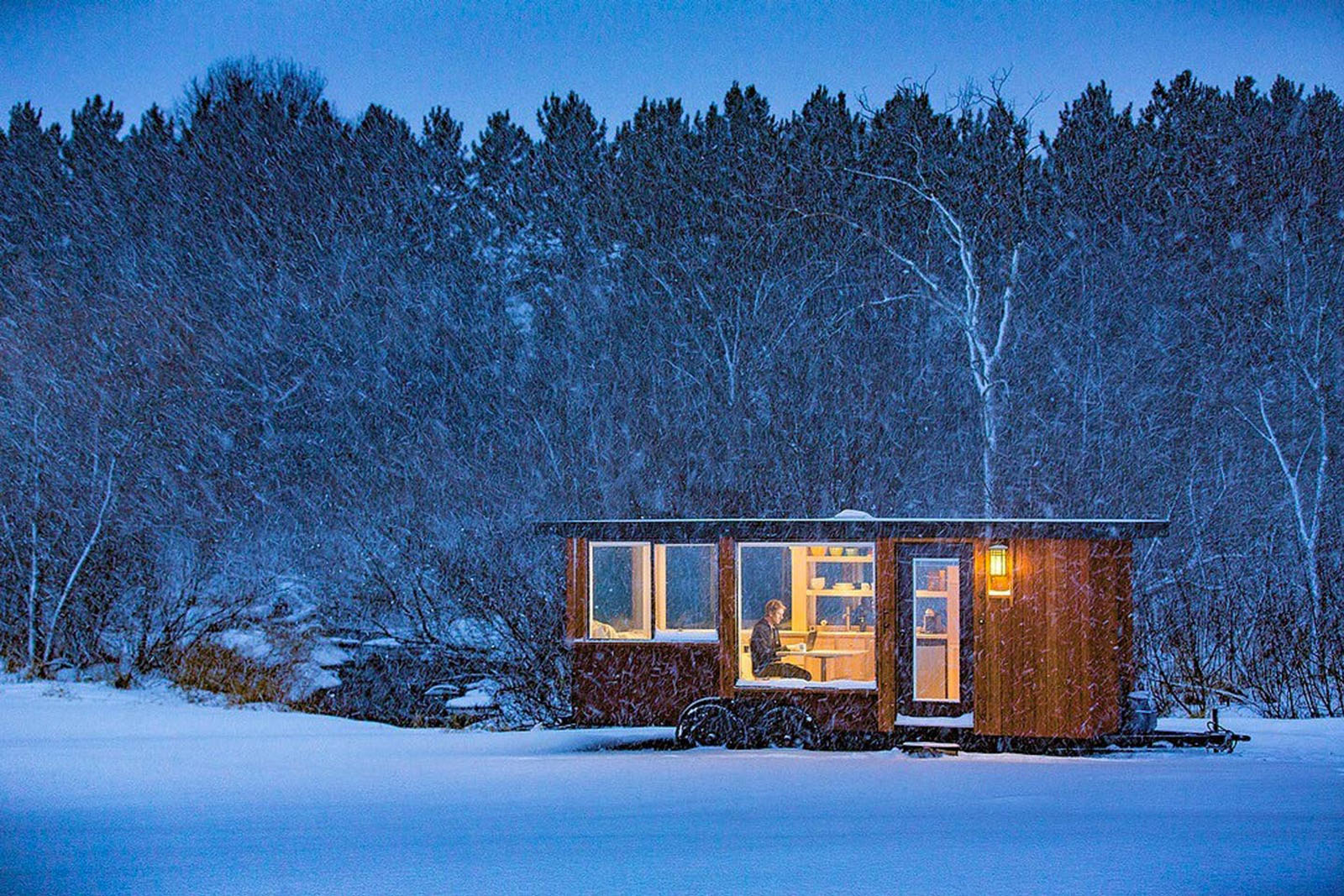For a decade-plus, travelers have longed for more than five-star hotels, 800-thread-count sheets, and a passive snooze on a celebrity beach. In a nutshell, flying and flopping is oh-so last century. Whether it’s educational tours, volunteer vacations, or adventure experiences, travelers seek out vacations that engage their body and their mind and deliver on a sense of purpose. They also act on an understanding of overtourism, a concern for sustainable practices, and a desire for community, activity, and experiences.
These trends help explain why a growing number of Airbnb experiences include farm stays, cabins, yurts, and earth houses that feature permaculture classes, craft-making, urban farming, beekeeping, and nature walks. And for those committed to or curious about the hallmarks of a homesteading lifestyle, these experiences provide a window (some quite literally) on nature and a life designed with it in mind. They also give guests a chance to learn self-sustainable skills and about local culture courtesy of experienced superhosts who offer first-hand knowledge about off-the-grid living. Here are five to consider.
1. Lazy B Farm – For A True Homestead Experience
Where: Statham, Ga.
Price: $30 per night
Side Trip Suggestions: Statham Farmers Market, Appalachian Mountains, State Botanical Garden of Georgia.
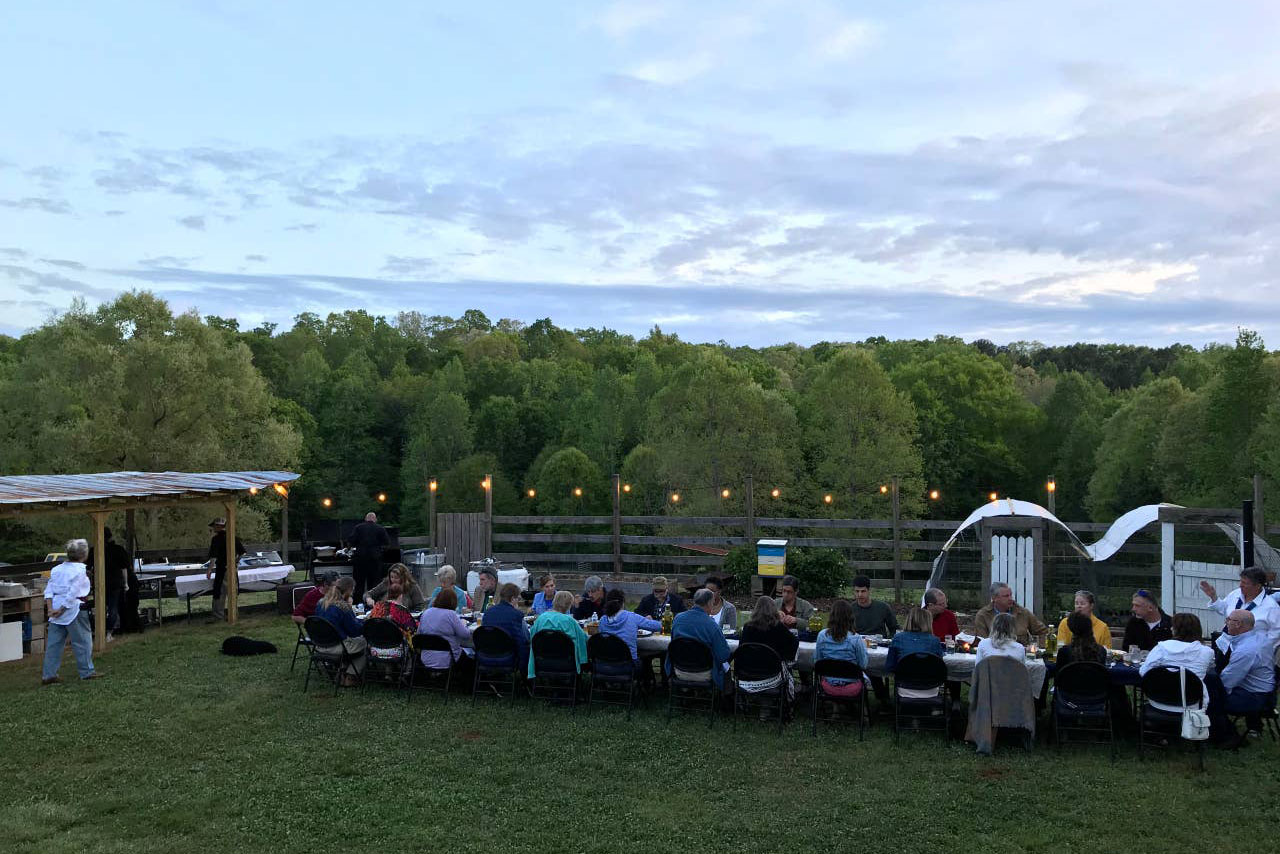
Popular workshops, mostly taught by Ball, founder of the National Ladies Homestead Gathering, an organization dedicated to empowering women through homesteading, include beekeeping, butchering classes, and soap making. Ball also recently began a beginner cooking series that features classes, such as Cooking with Lard and Kitchen Confidence, where she teaches guests what to do with the liver, heart, and tongue of various animals and the lard from a hog. A recent, popular class was a hands-on butchering workshop, followed by a pork potluck, which was taught by Meredith Leigh, an award-winning author, butcher, and farmer. She returns in October for a beef charcuteries class that includes wine and cheese.
Ball likes to lean toward swanky when it comes to her events. A couple of times a year, she hosts a farm-to-table dinner event. If you decide to come during this event, expect a lively night with musicians, waiter service, and a home-cooked meal under the starry night sky. “I wanted it to be classy and unique and an experience that nobody else had,” Ball says. Catch the next farm-to-table dinner on October 26.
Despite the classy offerings, visitors boast about the farm’s homey vibe. People are free to use the house and space as they wish. Ball says one of her favorite guests was a student who took over the kitchen and cooked a six-course meal with a bottle of wine for each course, using Lazy B Farm’s produce. “He used our celebration area, which is where we have our farm-to-table event,” she says. “So I set up the tables for him, and it was just so fun watching him use our farm to entertain his guests that came out here.”
2. Off-Grid Homestead Life With Sled Dogs
Where: Talkeetna, Ala.
Cost: $67 for a tour
Side Trip Suggestions: Talkeetna Historical Society Museum, Walter Harper Talkeetna Ranger Station, and the Chulitna River
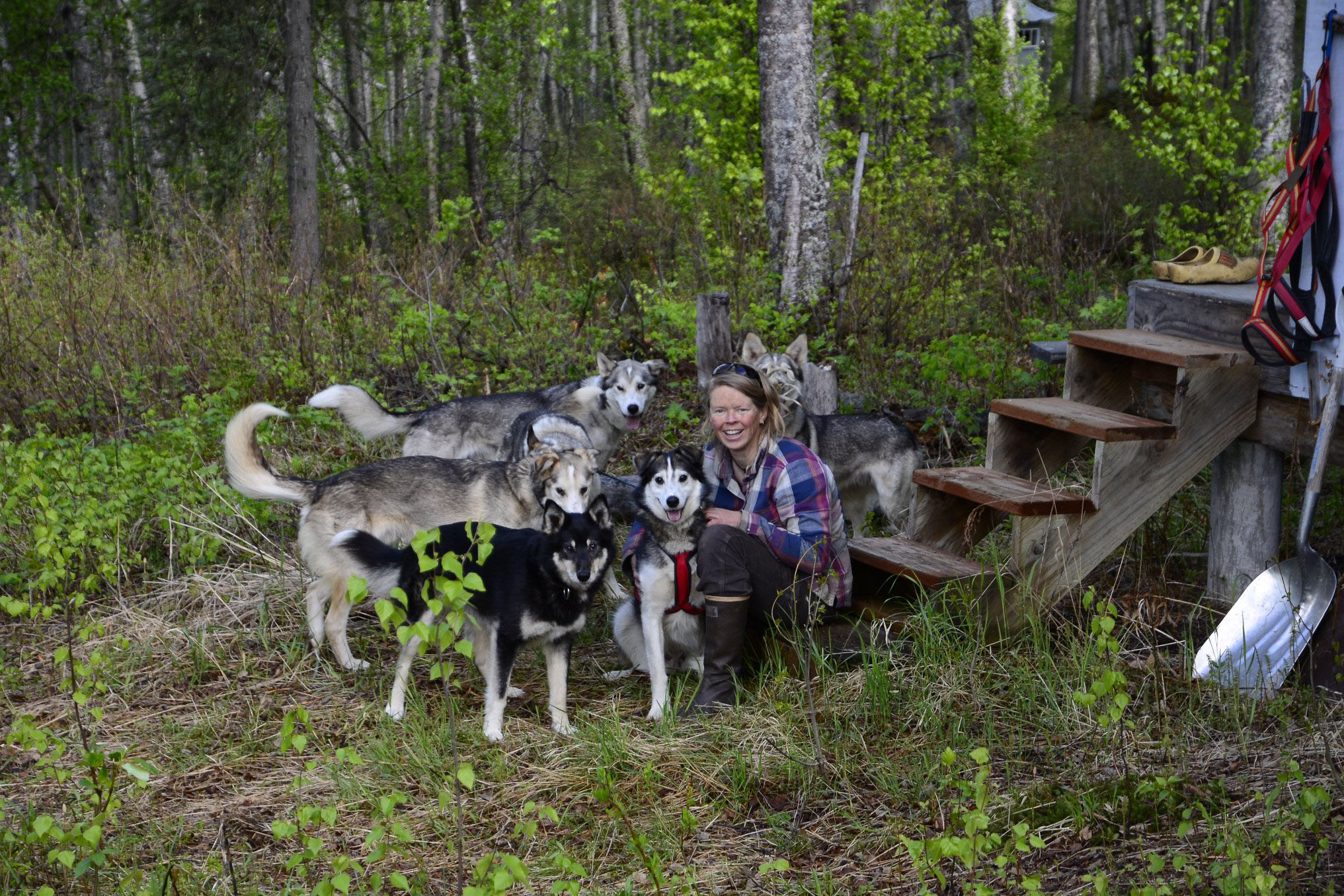
Living in the midst of the woods, Iris Vandenham, owner of Flower and Kennel Homestead, says the secret to living a true Alaskan life is living far away from the road system. Vandenham has been living off-grid for about 10 years and currently lives on her property located several miles away from Talkeetna, a small village, and about a half-mile away from the main gravel road. “Most people who come are super curious about what actually is Alaska and are coming here because it’s just me and very intimate,” she says. “You literally sit at my kitchen table. They’re more free to ask questions.”
During a stay at Vandenham’s off-grid homestead, guests meet all eight of her sled dogs and see how she uses her sled dogs for transportation, gathering firewood, and caribou hunting in the Arctic to store meat for the winter. The sled dogs are not pets. They mainly assist with work around the homestead, but most aren’t averse to a head stroke and a cuddle.
Beyond the dogs and the intimate kitchen-table chats, guests experience what it’s like to live independently and completely off-grid (read: no running water and no electricity). Vandenham shows guests how she generates electricity, gets water thanks to a rain-barrel system and a 100-gallon storage tank, sets up a solar-powered operation, preserves food, and makes her own beer. Vandenham says people are impressed with how she lives without a shower and a bathroom. For the record, she uses an outhouse and relies on neighbors for the occasional shower. “A lot of people here live off-grid,” she says. “It’s pretty normal when a friend invites you for dinner and if they have water, they expect you to bring your own towel and take shower.”
3. Back-to-the-Land Homestead
Location: Leadsville/Elkins, W.Va.
Cost: $35 per night
Side Trip Suggestions: Allegheny Highlands trail in Monongahela National Forest, Dolly Sods Wilderness Area, and Elkins Farmers Market
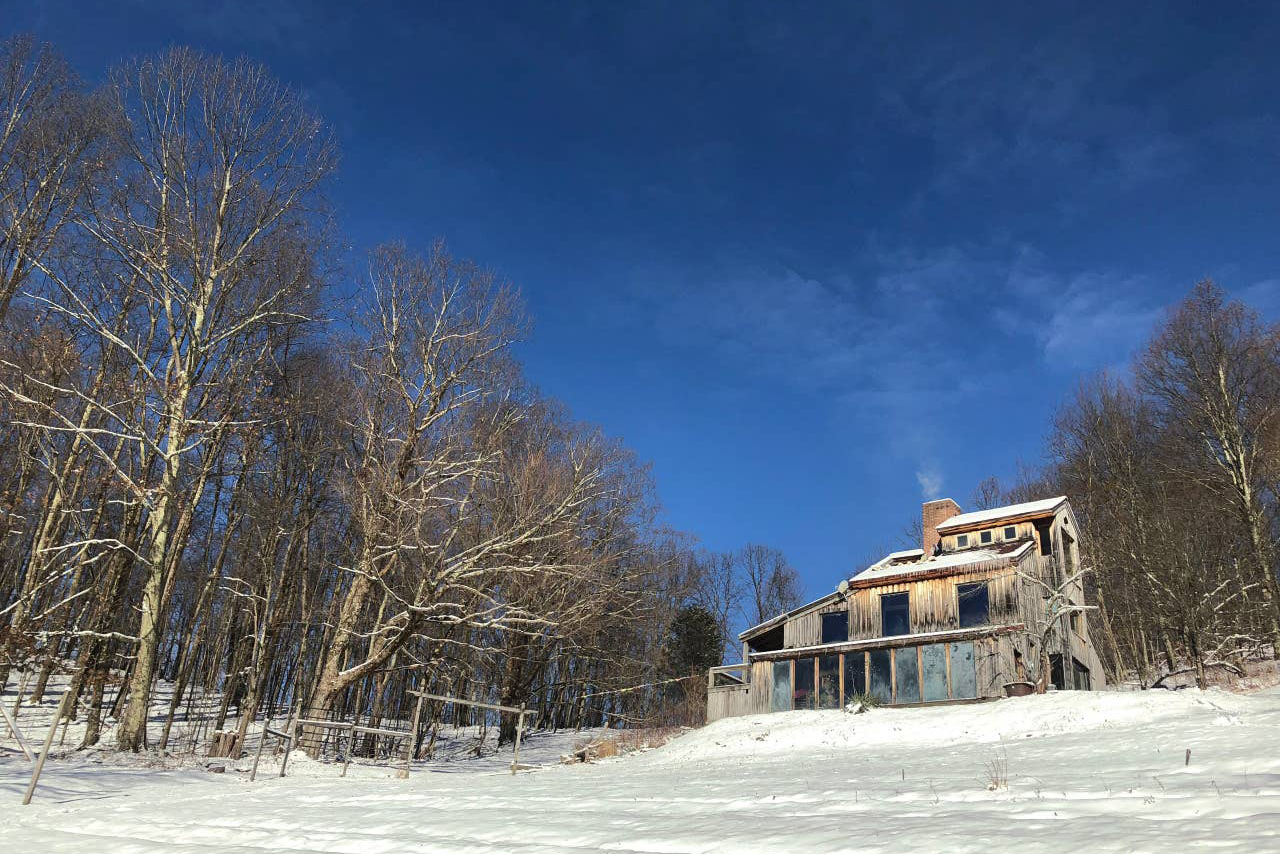
At the edge of Monongahela National Forest, one of the most ecologically diverse areas in the country, and sitting atop a 2,600-feet elevation hillside is this partially off-grid homestead. To reach a guest room in the three-story house, visitors must climb up a wooden ladder. But the climb delivers sweet, visual rewards: Thanks to a large picture window, visitors liken sleeping in the digs to slumbering in a planetarium. It also features a small, private deck to look out over the land and the mature tree canopy of the hollow (pronounced “holler” in Appalachia, which is pronounced “Appa-latch-uh”).
“When people stay at our homestead in Elkins, they will be in the heart of Appalachia, a region rich with history, culture and folk arts, friendly people and lush mountains,” says Margaret Bruning, who owns and runs the Poe Run Craft and Provisions, a 40-acre mountainside homestead on which this house sits. “I think West Virginia is America’s best kept secret,” she says. On this small, back-to-the-land homestead, guests will find Bruning and her husband, depending on the time of the year, doing various chores from baking bread and digging wild garlic ramps to pressing apple cider and cooking maple syrup. The home, which Bruning likens to a treehouse, was built by locals in the ’60s and ’70s during America’s back-to-the-land movement.
“You can go for either a two-second walk to the bathroom or a 20-minute walk and see such incredible diversity and plants, flowers, birds, bumblebees and all this stuff,” Bruning, who offers nature workshops for guests, says. Because nothing but mountains and forests surround the house, expect to meet deer, turkey, grouse, owls, hawks, and sometimes bears. With no running water (except for cold water from the kitchen sink), visitors must fetch their’s from the natural springs. Guests can request a campfire ring or a hammock to relax in the woods. And with an orchard and a 2,000-square-foot terrace garden in front of the house, food options abound (especially berries, according to Bruning). “We’re always eating something we made or grew or cultivated or found,” she says. “There’s so much abundance around us at all times.”
4. The Pondhouse
Location: Ashfield, Mass.
Cost: $241 per night, subject to season
Side Trip Suggestions: Whitewater rafting on the Deerfield River, Ashuwillticook Rail Trail, and Berkshire Canoe and Kayak Scenic Tour
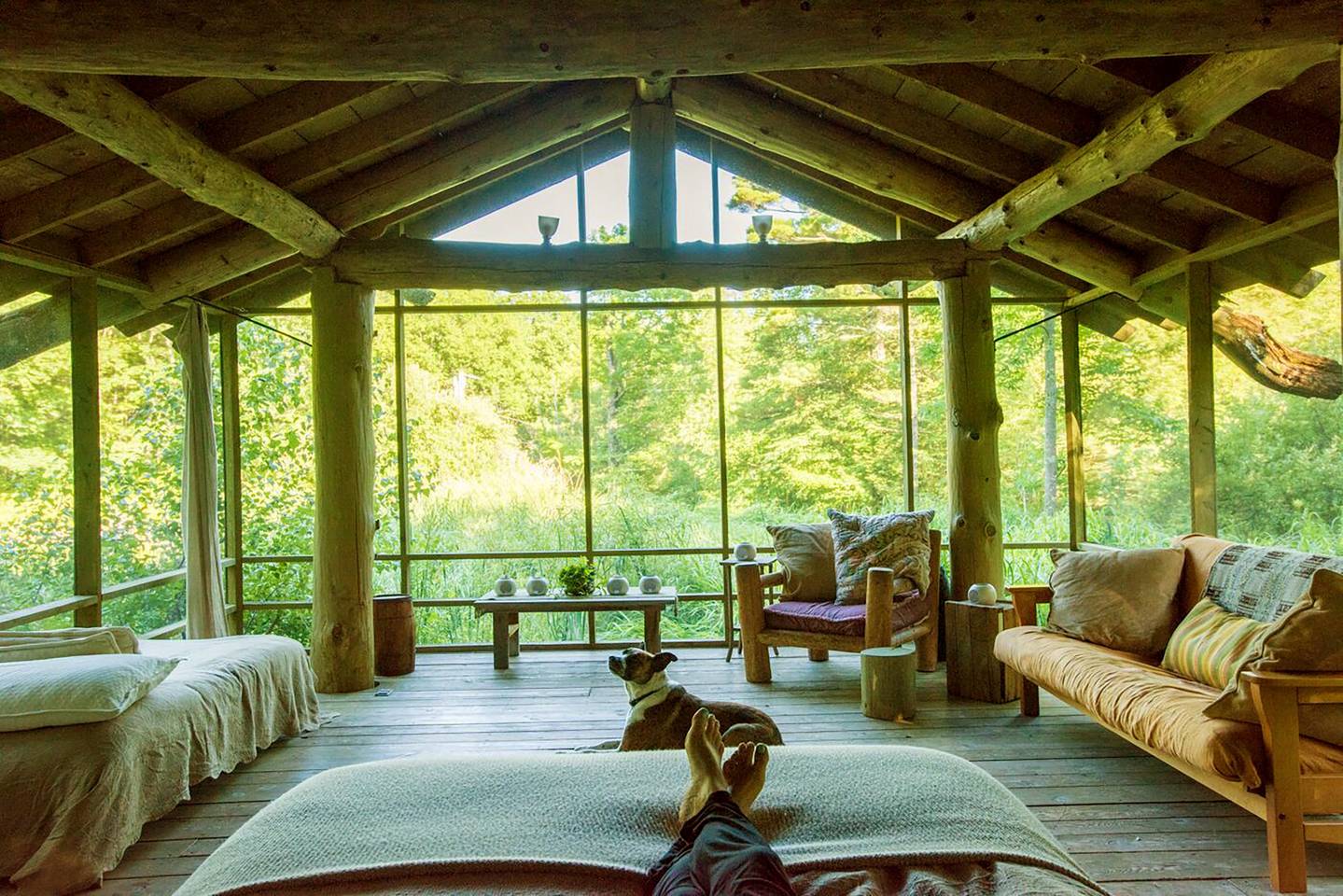
Nestled in the Berkshires — the green mountains of western Massachusetts — the Pondhouse sits just minutes away from Ashfield, a small community (population 1,750) that attracts artisans. At the Pondhouse, which many describe as a magical, heavenly getaway, expect to wake up to the sound of a babbling brook and gushes of the pond’s natural spring.
“People usually arrived stressed from their busy lives in the city and stressed from the drive. After a night sleeping in the Pondhouse, they seem like different people,” says Gayle Kabaker, who owns the property with her husband, artist Peter Kitchell. “Breathing air as you sleep and being surrounded by nature and no electronics is very rejuvenating.” Kitchell modeled the Pondhouse after Japanese storehouses and began building the screened structure 26 years ago from Hemlock tree logs.
It now exists as a glamping ground for experiential tourists. There’s no kitchen or electricity, but outside the Pondhouse, guests find a fire pit to cook meals, meditation spots around the pond, and walking trails in the woods. Guests in need of a phone charge or a bathroom can take a two-minute walk to the studio. Pondhouse is stocked with utensils, a coffee press, coffee, and tea. The studio houses a small fridge and an electric teapot for guests to use.
5. The Glass House: A Hudson Valley Tiny Home Escape
Location: Marlboro, N.Y.
Cost: $159 per night, subject to season
Side Trip Suggestions: Teatown Lake Reservation, Catamount Mountain Resort, Overlook Farm Market
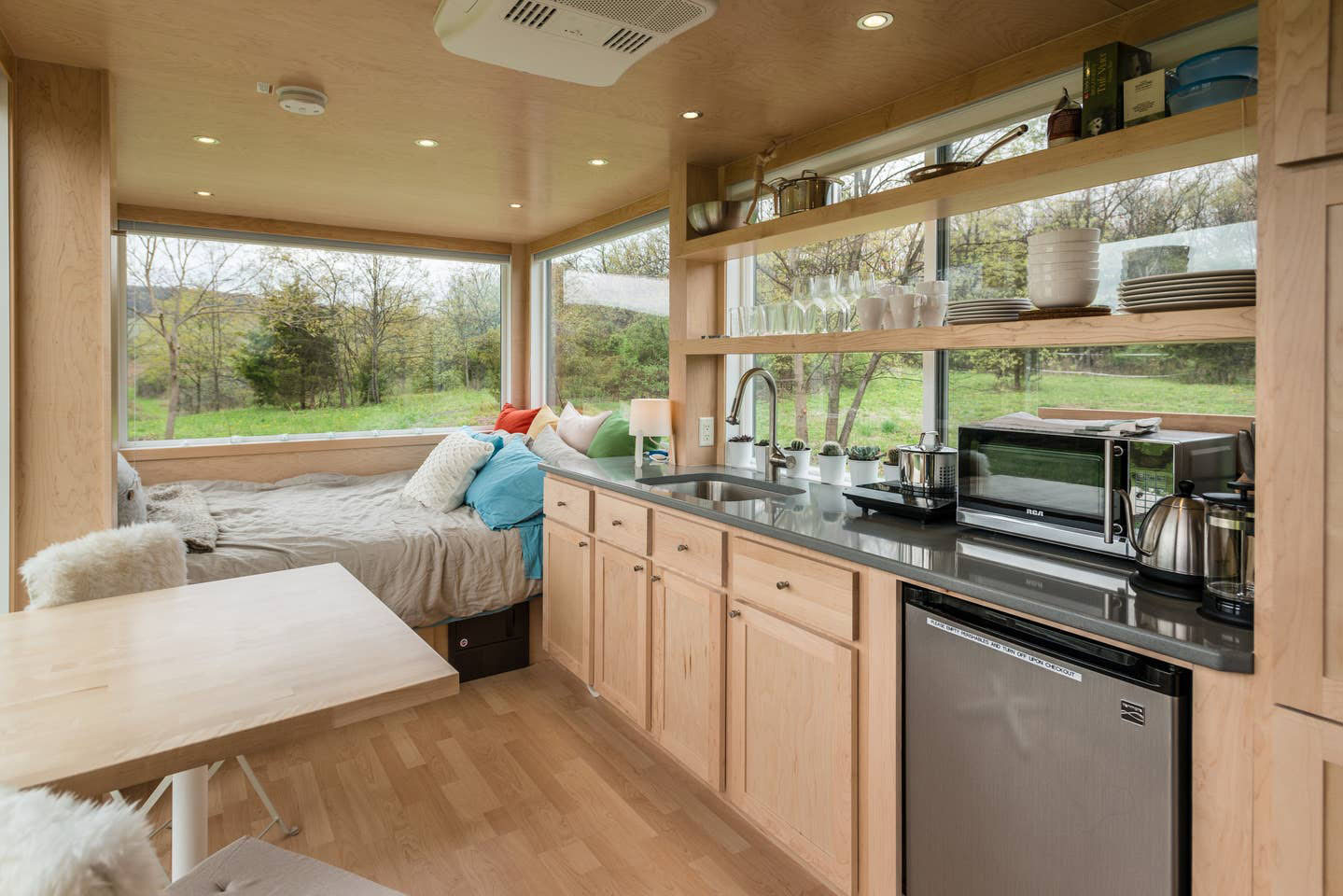
Reporters from The New York Times, The Today Show, and Forbes have covered this wee retreat, calling it “The World’s Most Beautiful Tiny House” and an “off-grid oasis.” Visitors praise the isolation provided by 30 acres of rolling hills that offer 360-degree views of vineyards, orchards, and wildlife (coyote, families of deer, and a diverse range of birds). “The appeal of the tiny house is its immersion in nature and these big glass walls kind of turn it into what I like to call a reverse view,” owner Seth Porges says. “There’s something very simple about being in a small space with big glass walls and they’re all around you.”
The 180-square-foot, glass-enclosed tiny house features Wi-Fi, air conditioning, a stocked, stainless-steel kitchen, mini-fridge, a queen-sized mattress, and outdoor dining and lounging furniture. Visitors also get complimentary eggs from a chicken coop nearby, making a farm-fresh breakfast using the grill.
“Being off-grid, it doesn’t necessarily mean you’re not connected to anything. It means, to me at least, it’s got to be clever about how you get the services you need,” Porges says. (Pop-culture aside: The toilet is a Laveo dry-flush toilet, the same toilet Matt Damon used in The Martian and offers 20 flushes per stay.) “What’s great about tiny houses is that they’re portable, and they’re modular, and you’re not bound by where a house happens to be. If you find a piece of land, you can put it almost anywhere and that’s really cool.”

